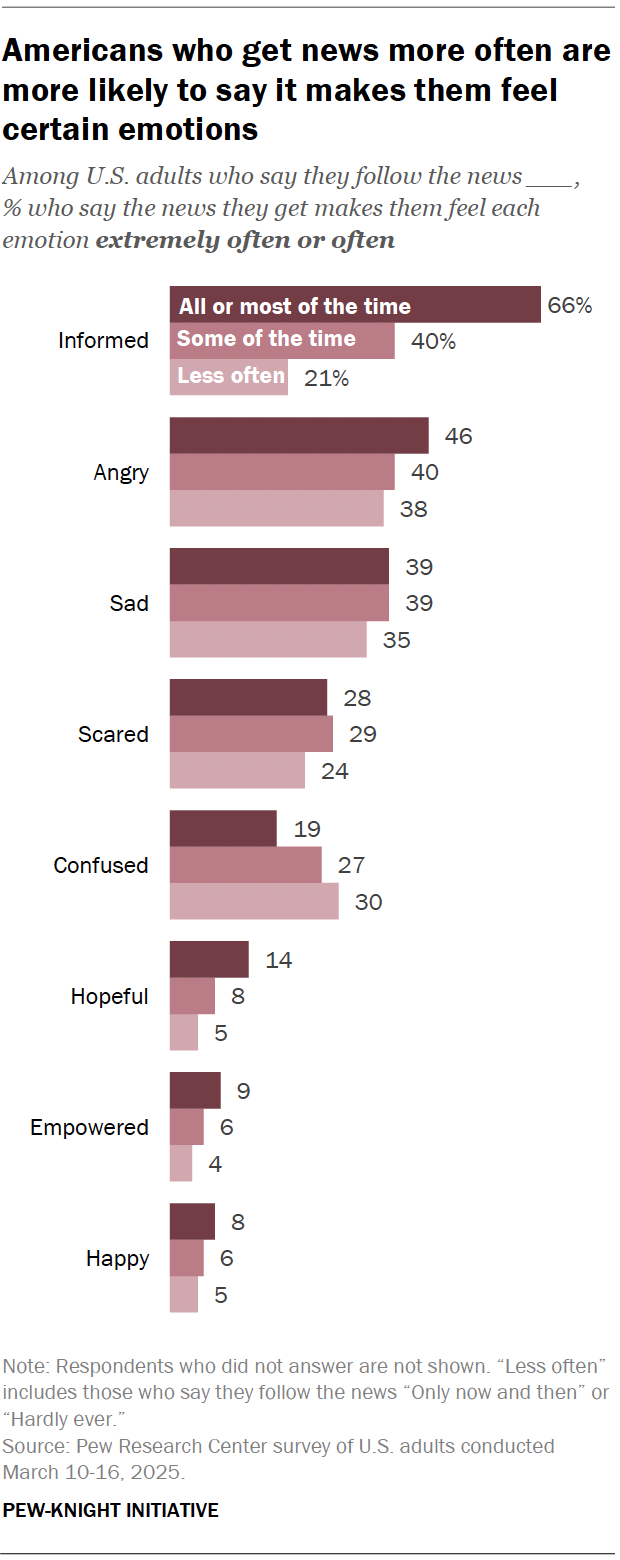The Pew-Knight Initiative supports new research on how Americans absorb civic information, form beliefs and identities, and engage in their communities.
Pew Research Center is a nonpartisan, nonadvocacy fact tank that informs the public about the issues, attitudes and trends shaping the world. Knight Foundation is a social investor committed to supporting informed and engaged communities. Learn more >
Americans have mixed emotional responses to the news they get. And those responses vary based on the amount of news they are accessing.
A recent Pew Research Center study asked U.S. adults to indicate how often the news they get makes them feel each of several emotions. They are generally more likely to say they feel the negative emotions we asked about than the positive ones. This analysis is part of the Pew-Knight Initiative, a research program funded jointly by The Pew Charitable Trusts and the John S. and James L. Knight Foundation.

However, there is one exception to this pattern: Nearly half of Americans (46%) say the news they get makes them feel informed extremely often or often.
Meanwhile, roughly four-in-ten Americans say the news they get makes them feel angry (42%) or sad (38%) often or extremely often. And about a quarter say it makes them feel scared (27%) or confused (25%) with the same frequency.
Smaller shares say the news they get makes them feel hopeful (10%), happy (7%) or empowered (7%).
How emotions vary among people who follow news more or less closely

People who follow the news more often are more likely to say it often makes them feel certain emotions.
For instance, those who follow the news all or most of the time are about three times as likely as those who only follow it now and then or hardly ever to say the news they get makes them feel informed extremely often or often (66% vs. 21%).
Similarly, 46% of U.S. adults who follow the news the most closely say it frequently makes them feel angry. On the other hand, 38% of those who follow it the least say this.
Relatively small shares of Americans overall say the news often makes them feel hopeful, empowered and happy. However, those who get news more often are also slightly more likely to say it makes them feel each of these emotions. For example, 14% of Americans who follow the news all or most of the time say the news makes them feel hopeful at least often. That compares with 8% of those who follow the news some of the time and 5% of those who get news less frequently.
Similarly, Americans who get news at least some of the time are a bit more likely than those who follow it less often to say it makes them feel sad or scared: 39% say the news frequently makes them feel sad, and 28% say it frequently makes them feel scared.
But this pattern flips when it comes to feeling confused. Americans who follow the news all or most of the time (19%) are less likely than those who follow it some of the time (27%) or less often (30%) to say the news they get makes them feel this way often or extremely often.
Note: Here are the questions used for this analysis, the topline and the survey methodology.

